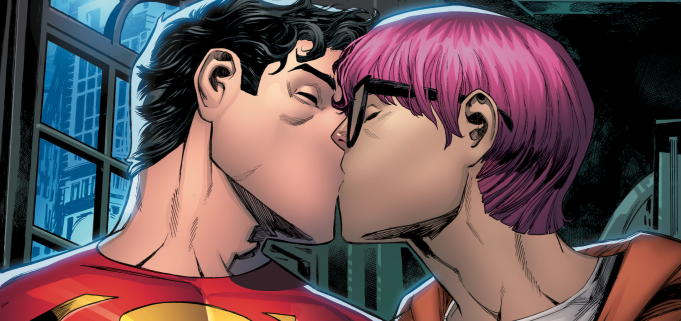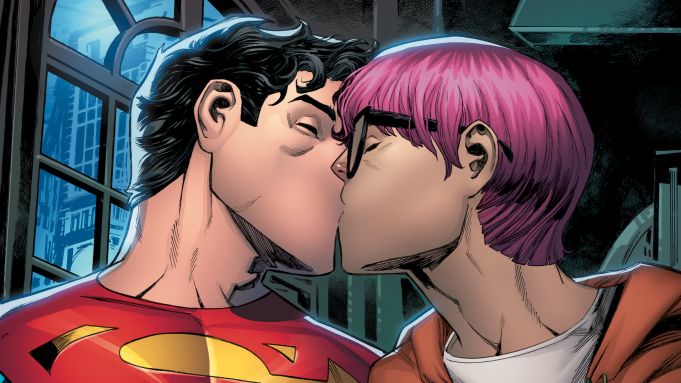The new Superman is an LGBTQ+ community win
On Oct. 11, DC Comics announced that Superman will be bisexual in their upcoming comic series “Superman: Son of Kal-El.” While he is not the first superhero to identify as part of the LGBTQ+ community, Superman is arguably the most prominent one yet.
Because the comic book world is such an influential place, this Superman iteration is a great step forward for the LGBTQ+ community — by making a popular superhero such as Superman bisexual, DC gives LGBTQ+ people the opportunity to see themselves in superhero comics, an area they historically have been underrepresented in.
With this move, DC increased representation perfectly. Rather than recycle an old storyline or use a lesser known character, they crafted a fresh storyline and utilized a character that spearheads DC Comics and perhaps is the most popular superhero of all time.
In 2020, Americans voted him as their favorite superhero. This result is surprising since Marvel superheroes have dominated the cinematic world for the last decade. DC releases movies as well, including 2013’s “Man of Steel” starring Henry Cavill as Superman, but it does not experience the same level of financial success and critical acclaim compared to Marvel.
While popularity is a fundamental aspect of a superhero, it does not supersede the story’s importance — here is where DC hits a home run.
This iteration is not the classic Superman storyline following Kal-El/Clark Kent, the Kryptonian who migrates to Earth after his home planet’s destruction, but rather, it follows his son, Jonathan Kent. Unlike his father, Jonathan is already integrated into humanity, making his story much more relevant and representative of today’s world.
Jonathan Kent stands up for his political beliefs and openly expresses his environmental concerns. The series will dive into stories about how he extinguishes wildfires caused by climate change, stops a school shooting and protests against the deportation of refugees in Metropolis — Superman’s home city.
While upholding these responsibilities, Jay Nakamura, Jonathan’s best friend, holds him down. Superman feels like he has to protect the whole world, but who is there to protect him? Jay is the one person who can. DC comics released an image of Jonathan and Jay sharing a kiss in this upcoming comic series, revealing the evolution of their relationship.
DC’s courage to take this iconic character in this direction is admirable. It is also important to note that DC did not recycle an already used Superman storyline and just swapped sexualities. It put effort toward writing a brand new one. For the LGBTQ+ community, this is a great win because it allows the new Superman and his story to be unique to them.
In the early 20th century, homosexual characters in movies were written solely for comical relief or humor. Hollywood called this archetypal character a “sissy.” Viewers laughed at a man who adopted “feminine” behaviors.
Later, the gay rights movement picked up steam in the 1940s. Instead of listening to the LGBTQ+ community’s concerns, the film industry rebelled against them. Many writers started portraying gay and lesbian characters as dangerous and violent. For instance, the book and film “The Maltese Falcon” labels the villain as a “weak and unsure” queer. Meanwhile, the protagonist is hetereosexual, strong and confident.
Moreover, a lack of accurate representation of the LGBTQ+ community is not just an issue of the 20th century. It continues today.
As recently as 2016, the film “Zoolander 2” featured a nonbinary character played by Benedict Cumberbatch. His character served one role as a punchline of a sexual joke about genitals where other characters wondered if Cumberbatch’s character had a “hot-dog or a bun.”
In the entertainment industry, we need to do better than utilize LGBTQ+ characters for just comic relief or bigoted humor. Additionally, the entertainment industry must not continue making LGBTQ+ characters small and minor roles. These characters deserve large parts, just as much as any hetreosexual character, because the LGBTQ+ community is filled with important perspectives and stories aside from its sexuality.
DC’s new Superman is the blueprint for the rest of the entertainment industry. Instead of an unknown LGBTQ+ character, Jonathan has his own room to grow and explore his sexual identity as a main focus. Instead of being a recycled, heterosexual leftover storyline with a swapped sexuality, Jonathan finds himself in a new narrative.


